



If you ever find yourself craving a place where the sea breeze carries stories from across the Pacific,Vladivostok is where you want to be. This city pulses with a unique energy—part rugged port town,part vibrant cultural crossroads. Walking along the waterfront,you’ll catch the salty tang of the ocean mixed with the aroma of sizzling street food stalls offering fresh seafood that’s as local as it gets. The soundscape is a lively mix of seagulls,distant ship horns,and the chatter of locals and travelers alike,creating a soundtrack that feels both adventurous and welcoming. Vladivostok’s character is shaped by its position as Russia’s gateway to Asia,blending Russian traditions with subtle hints of Korean,Chinese,and Japanese influences. The architecture tells stories too—Soviet-era buildings stand alongside colorful wooden houses and sleek modern structures,each corner revealing a new layer of the city’s past and present. Don’t miss the chance to explore the winding streets of the city center or to watch the sunset from Eagle’s Nest Hill,where the panoramic views of the Golden Horn Bay will take your breath away. What really stays with you is the warmth of the people and the city’s laid-back vibe. Whether you’re sipping on a cup of strong Russian tea in a cozy café or sampling freshly caught crab at a local market,Vladivostok invites you to slow down and soak in its rich,salty soul. It’s a place that surprises you,makes you curious,and leaves you wanting to come back for more.
The information on this page is currently being reviewed by Tripkliq and should be used as a guide only
Eng word: Hello
Eng pronunciation: Zdravstvuyte
Local language: Здравствуйте
Eng word: Goodbye
Eng pronunciation: Do svidaniya
Local language: До свидания
Eng word: Thank you
Eng pronunciation: Spasibo
Local language: Спасибо
Eng word: How much
Eng pronunciation: Skol'ko stoit
Local language: Сколько стоит
Eng word: Toilet
Eng pronunciation: Tualet
Local language: Туалет
Eng word: Help me
Eng pronunciation: Pomogite mne
Local language: Помогите мне
Eng word: Yes
Eng pronunciation: Da
Local language: Да
Eng word: No
Eng pronunciation: Nyet
Local language: Нет
Eng word: Excuse me
Eng pronunciation: Izvinite
Local language: Извините
Vladivostok was founded in 1860 as a military post during the reign of Emperor Alexander II.
Vladivostok served as a major naval base for the Russian Pacific Fleet due to its strategic location on the Sea of Japan.
Vladivostok is the terminus of the Trans-Siberian Railway, which was completed in 1916 and connected the city to Moscow.
During the Russian Civil War, Vladivostok was under siege by the Allied nations from 1918 to 1922 in an effort to support the White Army against the Bolsheviks.
Vladivostok came under Soviet control in 1922 and became one of the main ports of the Soviet Union in the Far East.
During World War II, Vladivostok served as a major port for the Allied forces and was the headquarters of the Pacific Fleet.
Vladivostok was a closed city during the Cold War and was heavily militarized due to its strategic importance.
Vladivostok was selected as the host city for the sailing events of the 1980 Summer Olympics, which were held in Moscow.
Vladivostok plays a significant role in the Russian economy as a major seaport and center for trade with East Asian countries.
In Vladivostok, the most common Power Adaptor is C, F.


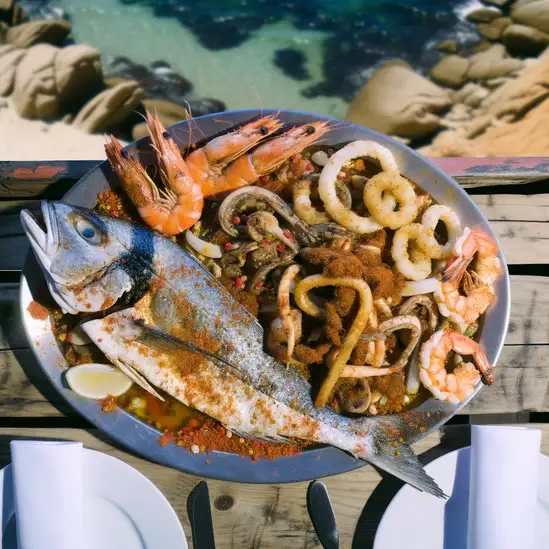
Given Vladivostok's coastal location, fresh seafood is abundant. A seafood platter may include various local catches like crabs, clams, and fish, often served with dipping sauces.
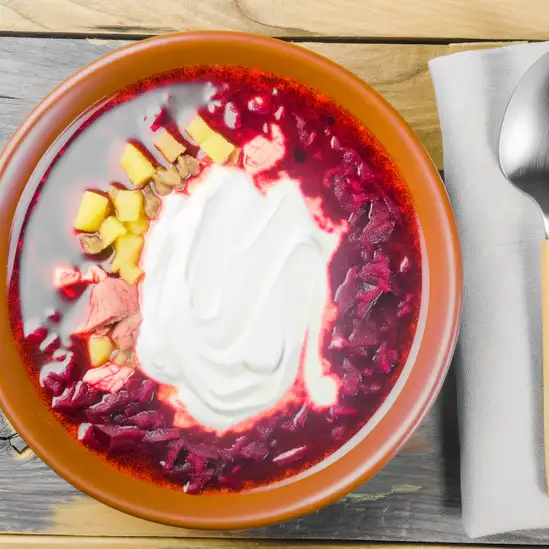
A hearty beet soup that is often served with sour cream and fresh herbs. This dish is a classic in Russian cuisine and can be found in many local restaurants.
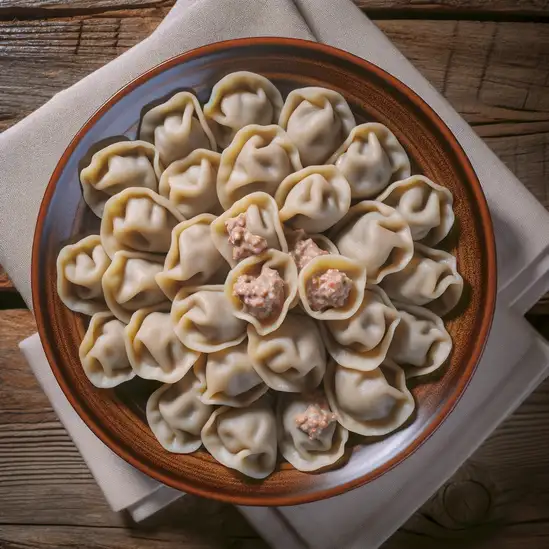
Dumplings filled with minced meat, often served with sour cream or butter. A staple in Russian cuisine, they are particularly popular in Vladivostok due to the city's cultural ties to Siberia.
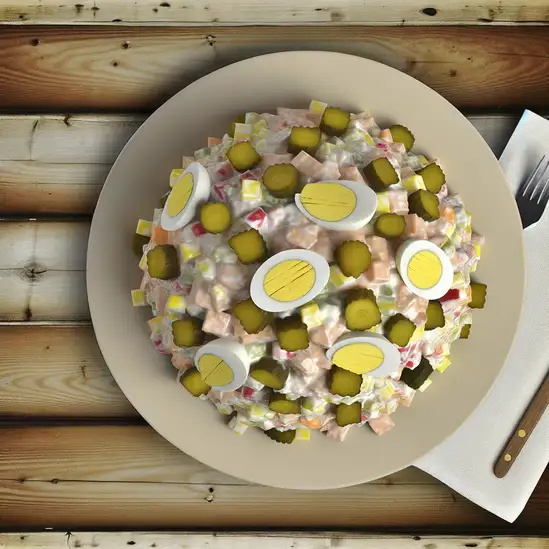
A traditional Russian salad made with diced boiled vegetables, eggs, pickles, and usually some type of meat, all mixed with mayonnaise. It's a common dish during celebrations and gatherings.
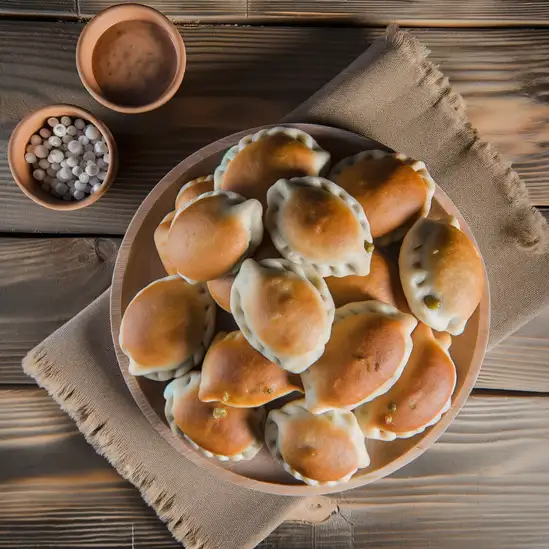
Small baked or fried buns filled with a variety of fillings, such as meat, cabbage, or sweet fruit. They are a popular street food and snack in the region.

Dumplings similar to pelmeni but often filled with sweet or savory fillings such as potatoes, cheese, or cherries. They are usually served with sour cream.

A jellied meat dish made from meat broth that is cooled until it sets. It is typically served cold and is a popular appetizer in Russian cuisine.

A traditional Russian cabbage soup that can be made with fresh or fermented cabbage, often flavored with meat and served with sour cream.
Tokyo feels like stepping into a living,breathing mosaic where tradition and futurism dance side by side. The moment you arrive,you’re swept up in a vibrant energy that hums through neon-lit streets and quiet temple gardens alike. Imagine the buzz of Shibuya Crossing,where hundreds of people move in perfect chaos,the air tinged with the scent of sizzling street food and fresh cherry blossoms in spring. It’s a city that never quite sleeps,yet somehow offers pockets of serene calm if you know where to look.
Walking through Tokyo,you’ll hear a symphony of sounds—from the rhythmic clatter of trains to the soft murmur of locals chatting over steaming bowls of ramen. The city’s character is a fascinating blend of meticulous order and playful creativity. You can find centuries-old shrines nestled between sleek skyscrapers,and quirky themed cafes that feel like stepping into another world. The taste of Tokyo is unforgettable too—whether it’s the delicate umami of sushi at a tiny neighborhood spot or the comforting warmth of matcha-flavored sweets.
What makes Tokyo truly unique is how it embraces contrasts without missing a beat. It’s a place where you can lose yourself in sprawling shopping districts,then find quiet reflection in a moss-covered garden. The people,warm and respectful,add a layer of kindness that makes the city feel welcoming despite its size. If you’re curious,open-hearted,and ready to explore,Tokyo will surprise you at every turn and leave you with stories you’ll want to share again and again.
Seoul feels like a city that’s constantly humming with life,where ancient traditions and cutting-edge modernity dance side by side. Imagine wandering through narrow alleys lined with hanok houses,their wooden beams glowing softly in the afternoon sun,then stepping out into bustling streets filled with neon signs and the irresistible aroma of sizzling street food. The city’s energy is contagious—there’s a rhythm to it,from the chatter of locals bargaining at markets to the steady beat of K-pop spilling out of cafes.
What really sticks with you is how Seoul engages all your senses. You’ll hear the clatter of chopsticks and laughter at a late-night pojangmacha (street food tent),smell the sweet,smoky scent of grilled meat mingling with spicy kimchi,and feel the crisp breeze along the Han River as joggers and families enjoy the parks. The city’s layers reveal themselves slowly—ancient palaces tucked between skyscrapers,tranquil temples offering quiet moments amid the urban rush.
Seoul’s character is a blend of warmth and innovation. People are friendly and proud of their culture,eager to share stories over a cup of rich,bitter coffee or a bowl of comforting bibimbap. Whether you’re exploring art galleries in trendy neighborhoods like Hongdae or soaking in the panoramic views from Namsan Tower,there’s a genuine pulse here that invites you to dive deeper,to taste,listen,and truly feel the city’s soul.
Imagine stepping into a city where towering skyscrapers meet bustling street markets,and the scent of sizzling street food mingles with the salty breeze from Victoria Harbour. That’s Hong Kong for you—a vibrant pulse of energy that never quite slows down. Walking through its neighborhoods,you’ll hear a symphony of sounds:the chatter of locals bargaining over fresh produce,the clatter of dim sum carts,and the distant hum of ferries gliding across the water. It’s a place where East and West blend seamlessly,creating a unique rhythm that’s both modern and deeply rooted in tradition.
What really grabs you about Hong Kong is its character—bold,unapologetic,and endlessly curious. One moment you’re wandering through neon-lit streets in Mong Kok,alive with the buzz of night markets and arcade games,and the next,you’re finding calm in the lush greenery of Victoria Peak or the quiet temples tucked away in the city’s corners. The city’s food scene alone is a journey:from steaming bowls of wonton noodles to delicate egg tarts fresh from the oven,every bite tells a story.
Hong Kong feels like a city that’s always inviting you to explore a little deeper,to taste a little more,and to soak in its vibrant culture. It’s a place where every street corner has a story,and every sunset over the harbor feels like a personal gift. Trust me,once you’re there,you’ll understand why it’s impossible not to fall a little in love with this dynamic city.
Imagine stepping into a city that buzzes with an infectious energy,where neon lights splash vibrant colors across the night sky and the air hums with laughter and chatter. That’s Osaka for you—a place that feels alive in the most welcoming way. It’s not just a city; it’s a warm,spirited friend who invites you to dive into its lively streets,where every corner tells a story. The scent of sizzling takoyaki and okonomiyaki wafts through the air,tempting you to stop and savor the rich,comforting flavors that define Osaka’s food culture.
Walking through Dotonbori,you’ll hear the rhythmic clatter of chefs flipping pancakes on hot griddles,mixed with the playful calls of street vendors. The city’s character shines in its blend of old and new—ancient castles stand proudly near bustling shopping arcades,and traditional theaters share space with quirky,modern cafes. People here are famously friendly and down-to-earth,always ready with a smile or a helpful tip,making you feel instantly at home.
What makes Osaka truly special is its unapologetic joyfulness. It’s a city that celebrates life through its food,festivals,and everyday moments. Whether you’re savoring a bowl of rich ramen,exploring vibrant markets,or simply soaking in the neon-lit riverbanks,Osaka wraps you in a warm embrace that lingers long after you leave. Trust me,once you experience its spirited charm,you’ll find yourself dreaming of coming back.
Imagine stepping into a city where the past and future dance side by side,and that’s Shanghai for you. The moment you arrive,there’s this electric buzz in the air—neon lights flicker against the twilight sky,while the gentle hum of the Huangpu River carries stories from centuries ago. Walking along the Bund,you can almost taste the salty breeze mingling with the aroma of street food stalls sizzling with dumplings and scallion pancakes. It’s a city that never quite sleeps,yet somehow feels intimate and alive all at once.
Shanghai’s character is a fascinating blend of old-world charm and cutting-edge modernity. You’ll find yourself wandering through narrow alleys in the French Concession,where leafy trees shade quaint cafes and art galleries,then suddenly be swept up by the futuristic skyline of Pudong,with its towering skyscrapers piercing the clouds. The city’s rhythm is a mix of traditional tea houses where locals chat over jasmine tea and the pulse of techno beats spilling out of rooftop bars.
What really makes Shanghai unforgettable is how it invites you to slow down and soak in its layers. The chatter of vendors,the clinking of mahjong tiles,the scent of jasmine and roasted chestnuts—all these details create a sensory tapestry that feels both vibrant and comforting. It’s a place where every corner tells a story,and every meal is a celebration. Trust me,once you’ve felt Shanghai’s heartbeat,you’ll want to come back just to listen again.
If you ever find yourself in Japan and want a city that feels both refreshingly laid-back and buzzing with life,Sapporo is where you should go. The moment you step out,there’s this crisp,clean air that instantly wakes you up,especially if you visit in winter when the snow blankets everything in a soft,quiet hush. But don’t let that fool you—Sapporo pulses with energy,from the lively street markets to the cozy izakayas where locals gather over steaming bowls of miso ramen,rich and comforting with just the right kick.
Walking through Odori Park,you’ll catch the scent of fresh pine mingling with the sweet aroma of grilled seafood from nearby stalls. The city’s architecture is a charming mix of modern and rustic,with red brick buildings standing proudly alongside sleek glass towers. And if you’re there during the snow festival,prepare to be amazed by the incredible ice sculptures that glow under colorful lights,turning the city into a magical winter wonderland.
What really makes Sapporo stand out is its genuine warmth. People here have a relaxed friendliness that makes you feel instantly welcome,whether you’re chatting with a vendor at the morning market or sharing a drink with new friends. Plus,the local craft beer scene is fantastic—Sapporo Brewery’s fresh brews taste even better when you enjoy them in the city where it all began. Trust me,Sapporo isn’t just a place to visit; it’s a place that stays with you long after you leave.
Skimming devices may be installed on ATMs to steal card information, particularly in less secure or tourist-heavy areas.
Scammers may pose as charity workers, asking tourists for donations to nonexistent causes.
Tourists may encounter unofficial currency exchange services offering attractive rates but providing counterfeit or incorrect amounts of money.
Unlicensed individuals may pose as tour guides, offering subpar or fabricated tours for high fees.
Vendors in tourist-heavy areas may inflate prices for souvenirs, especially if they sense the buyer is unfamiliar with local pricing.
In crowded areas like markets, public transport, or tourist attractions, pickpockets may target unsuspecting tourists.
Some restaurants may have dual pricing—one for locals and another, higher one for tourists—or add hidden charges to the bill.
Street performers may demand payment after a tourist takes a photo or watches their performance, sometimes aggressively.
Some taxi drivers may not use meters and charge tourists exorbitant rates, especially from the airport or train station.
The possession, use, and distribution of illegal drugs are strictly prohibited in Vladivostok and throughout Russia. Penalties for drug-related offenses are severe and can include hefty fines, imprisonment, and deportation for foreign nationals. Even small quantities of illegal substances can lead to serious legal consequences. Tourists should avoid any involvement with drugs to ensure a safe and trouble-free visit.
In Vladivostok, as in the rest of Russia, smoking is heavily regulated. Smoking is prohibited in public places such as schools, universities, hospitals, sports facilities, playgrounds, public transportation, and within 15 meters of entrances to subway stations, airports, and railway stations. Violations can result in fines. Designated smoking areas are available in some public places, but tourists should always look for signs indicating where smoking is allowed.
Vaping is subject to similar regulations as smoking in Vladivostok. The use of electronic cigarettes is banned in the same public places where smoking is prohibited. This includes educational institutions, healthcare facilities, public transportation, and other designated non-smoking areas. Tourists should be cautious and look for designated vaping areas to avoid fines.
What are other people saying about Vladivostok?
Recent Social posts about Vladivostok
There is nothing to show you for now.